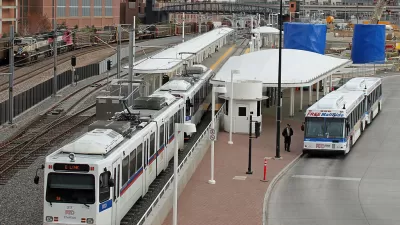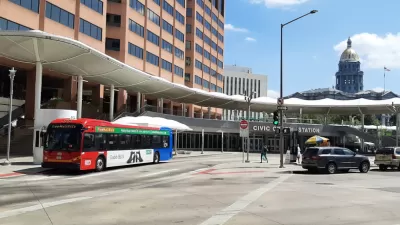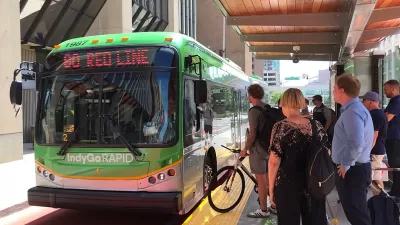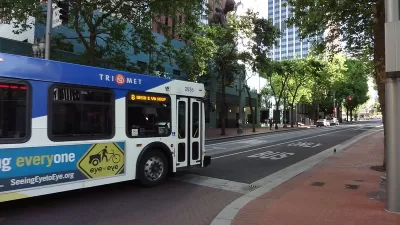The Regional Transportation District will focus on providing improved service on its most popular lines while eliminating underused routes and replacing them with on-demand microtransit.

Like other transit systems around the country, Colorado's Regional Transportation District (RTD) is proposing an overhaul of its service to better serve post-pandemic travel patterns. Nathaniel Minor reports that with ridership dropping off in suburban areas, the agency will focus on boosting service in the denser areas where ridership remained steady.
The RTD's proposal, which would change around 30 percent of the bus system, would be implemented over the next five years. The agency plans to shift existing lines, adjust service frequency on highly-used routes, and eliminate underperforming lines. To make up for the loss of service, RTD plans to introduce an on-demand service to ensure residents of lower-density areas still have access to transit. Changes would apply primarily to bus lines, while RTD's light rail and commuter rail lines would largely remain the same.
Shontel Lewis, an RTD board member, praised the proposal for "prioritizing equity" and enhancing service for the low-income communities that depend on transit. Others worry that limiting transit in suburban areas will further encourage driving and reduce the likelihood of people switching modes.
FULL STORY: RTD proposes massive overhaul: Fewer suburban buses, more service where riders remained during the pandemic

Trump Administration Could Effectively End Housing Voucher Program
Federal officials are eyeing major cuts to the Section 8 program that helps millions of low-income households pay rent.

Planetizen Federal Action Tracker
A weekly monitor of how Trump’s orders and actions are impacting planners and planning in America.

Ken Jennings Launches Transit Web Series
The Jeopardy champ wants you to ride public transit.

Washington Legislature Passes Rent Increase Cap
A bill that caps rent increases at 7 percent plus inflation is headed to the governor’s desk.

From Planning to Action: How LA County Is Rethinking Climate Resilience
Chief Sustainability Officer Rita Kampalath outlines the County’s shift from planning to implementation in its climate resilience efforts, emphasizing cross-departmental coordination, updated recovery strategies, and the need for flexible funding.

New Mexico Aging Department Commits to Helping Seniors Age ‘In Place’ and ‘Autonomously’ in New Draft Plan
As New Mexico’s population of seniors continues to grow, the state’s aging department is proposing expanded initiatives to help seniors maintain their autonomy while also supporting family caregivers.
Urban Design for Planners 1: Software Tools
This six-course series explores essential urban design concepts using open source software and equips planners with the tools they need to participate fully in the urban design process.
Planning for Universal Design
Learn the tools for implementing Universal Design in planning regulations.
Heyer Gruel & Associates PA
Ada County Highway District
Institute for Housing and Urban Development Studies (IHS)
City of Grandview
Harvard GSD Executive Education
Toledo-Lucas County Plan Commissions
Salt Lake City
NYU Wagner Graduate School of Public Service





























